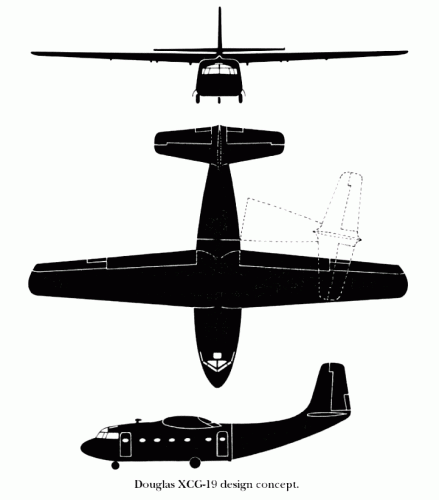The Englishman Sir Frank Whittle had set in motion the trajectory of future aviation development when he successfully conducted test runs of the world's first jet engine, the Power Jets WU, on April 12, 1937, yet Nazi Germany beat the United Kingdom to the punch in the race to develop the world's first jet airplane when on August 27, 1939 the Heinkel He 178 took to the skies for the first time. However, the benefits of the turbojet engine with regards to the performance of aircraft were not lost on US engineers during the 1930s. In 1933, Nathan Price, an engineer at Doble Steam Motors, began work on an exotic steam turbine design that featured a centrifugal compressor that fed air to a combustion chamber, which would feed steam into a turbine before exiting via a nozzle, powering both the compressor and propeller. This experimental steam turbine was fitted to a test aircraft in early 1934, and tests showed performance on par with existing piston engines, although the engine had difficulty maintaining power at high altitudes. The US aerospace industry and US Army expressed little interest in Price's steam turbine design, and work was halted in 1936.
Although his Doble Steam Motors design did not attract serious interest from the military or the aerospace industry, Price continued work on centrifugal engine designs. In 1938, he conceived the first design for an American turbojet engine, which featured low-compression axial compressor stages that fed a high-compression reciprocating compressor. Price was eventually hired by the Lockheed Aircraft Corporation in Burbank, California, to evaluate General Electric superchargers being fitted to the Lockheed XP-49 prototype long-range fighter (itself a derivative of the P-38 Lightning). Clarence "Kelly" Johnson, the future head of the Lockheed Skunk Works, recognizing the problem of compressibility experienced by the P-38 Lightning, expressed interest in Price's turbojet design, so the jet engine conceived by Price was given the company designation L-1000 (Kay 2007, pp. 71-73).
In April 1941, General Henry "Hap" Arnold, head of the US Army Air Force (later US Army Air Force) witnessed test flights of the first British jet aircraft, the Gloster G.40 Pioneer (aka E.28/39), and he successfully persuaded the Power Jets company to export examples of the W.1 turbojet as well as drawings for the improved W.2B/23 design to the US, leading to General Electric being awarded a contract in September to license-build the W.2B/23 as the General Electric I-A/J31. On March 30, 1942, Lockheed submitted the L-133 and L-1000 designs to the USAAF for consideration. The Army Air Force, however, decided that the L-133 was too advanced for its time to be a practical weapon, so the L-133 remained a paper project (Norton 2008, p. 221). Instead, the Bell Aircraft Corporation in Buffalo, New York, would get the chance to build the first US jet fighter, the Bell P-59A Airacomet, which first flew on October 1, 1942 and used two J31 turbojets. Nonetheless, Lockheed would later use experience gained in designing the L-133 to develop a jet fighter of less radical design than the L-133, the P-80 (later F-80) Shooting Star, whose first flight occurred on January 8, 1944. Meanwhile, Nathan Price in May 1943 redesigned the L-1000 as a simpler design consisting of two 16-stage axial compressors; in July the USAAF awarded Lockheed a contract to build the L-1000 jet engine under the military designation XJ37. Three L-1000s were built, with the first example beginning test runs in 1946 (Kay 2007, p. 74).
Although the L-133 never left the drawing board, the timing of its design along with that of the L-1000 jet engine envisaged by Nathan Price highlight the fact that American engineers were coming up their own schemes for jet engine and jet planes technology around the same time as those by Frank Whittle and Hans von Ohain. In retrospect, every American jet fighter built since World War II basically owes their existence thanks to the aerodynamic properties and jet engine technology first developed for the L-133, namely the afterburner and maneuverability in combat.
References:
Francillon, R.J., 1982. Lockheed Aircraft since 1913. London: Putnam & Company.
Jenkins, D.R., and Landis, T.R., 2008. Experimental & Prototype U.S. Air Force Jet Fighters. North Branch, MN: Specialty Press, 2008.
Kay, A., 2007. Turbojet: History and Development 1930–1960, Vol. 2. Ramsbury: Crowood Press.
Norton, W., 2008. U.S. Experimental & Prototype Aircraft Projects: Fighters 1939–1945. North Branch, MN: Specialty Press.
Pace, S., 1991. X-Fighters: USAF Experimental and Prototype Fighters, XP-59 to YF-23. St. Paul, MN: Motorbooks International.
Jenkins, D.R., and Landis, T.R., 2008. Experimental & Prototype U.S. Air Force Jet Fighters. North Branch, MN: Specialty Press, 2008.
Kay, A., 2007. Turbojet: History and Development 1930–1960, Vol. 2. Ramsbury: Crowood Press.
Norton, W., 2008. U.S. Experimental & Prototype Aircraft Projects: Fighters 1939–1945. North Branch, MN: Specialty Press.
Pace, S., 1991. X-Fighters: USAF Experimental and Prototype Fighters, XP-59 to YF-23. St. Paul, MN: Motorbooks International.






























